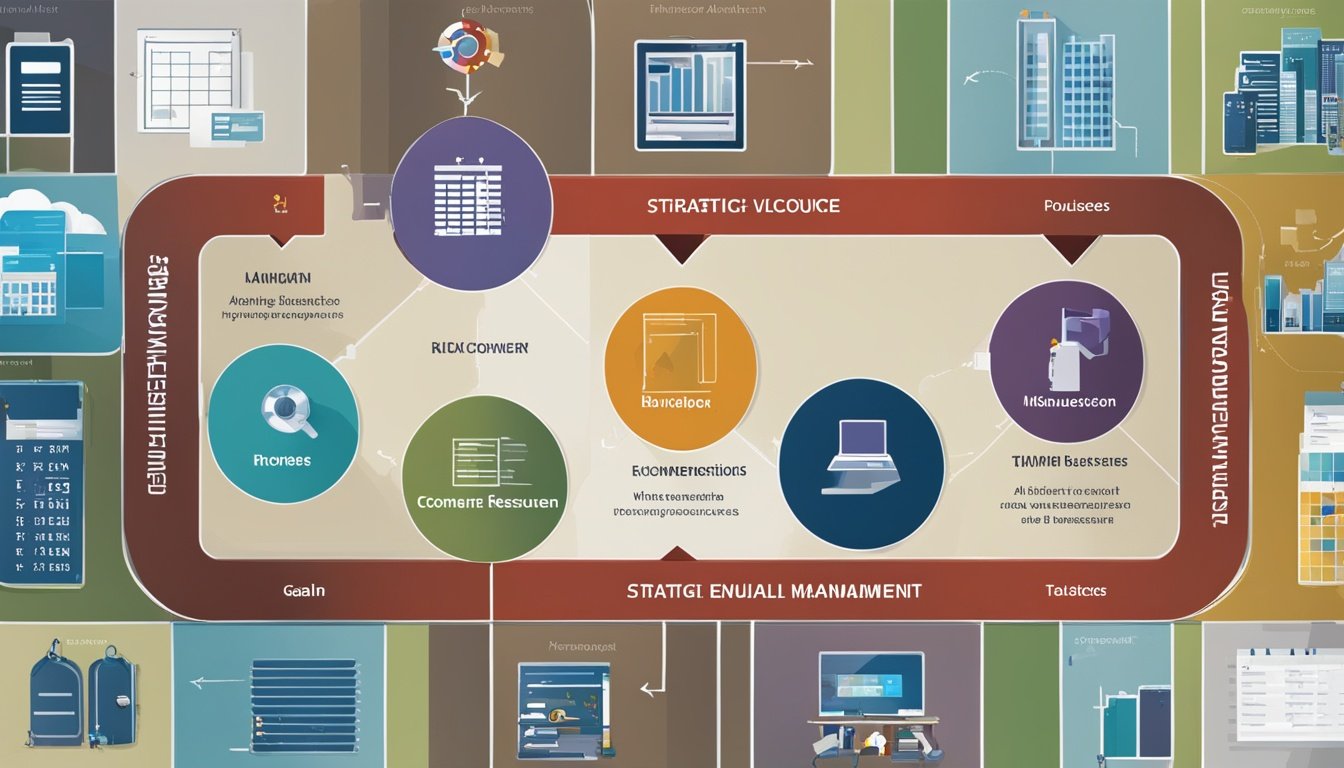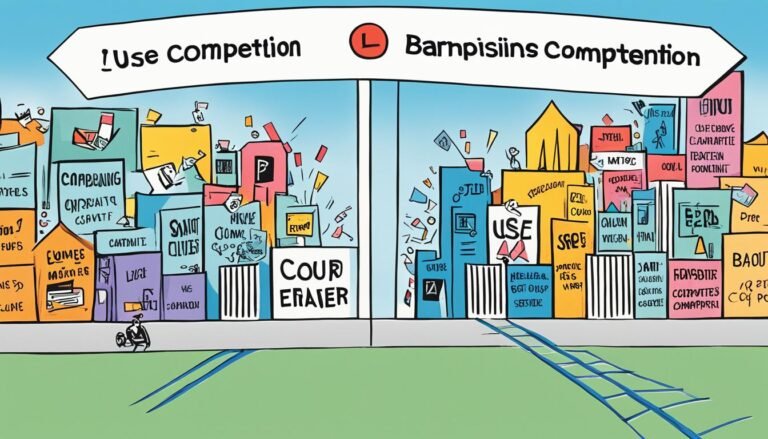Resource Allocation – Efficient Use of Resources for Strategic Gains
Did you know 83% of business leaders see proper resource allocation as key for growth? In today’s fast business world, using resources well is more important than ever. It’s a strategic way to pick and use people, money, and things for projects or tasks to meet goals.
This idea is not just about being efficient. It’s also about cutting waste and making sure resources match the company’s big goals.
Using a smart system for resource allocation can make a company more productive. It helps with making better decisions and doing better financially. Companies that focus on this can handle challenges better, creating a flexible place that uses resources well.
As companies deal with more demands and less resources, learning how to manage resources well is key. It’s important for lasting growth and success.
Key Takeaways
- Effective resource allocation is vital for organizational growth and sustainability.
- Strategic resource management minimizes waste and optimizes resource utilization rates.
- Companies benefit from enhanced decision-making and productivity through optimized resource allocation.
- Implementing dedicated resource management software can streamline allocation processes.
- Understanding interdependencies is crucial for effective resource allocation in project management.
- Proper allocation empowers teams, improving job satisfaction and engagement.
Understanding Resource Allocation
Resource allocation is key to an organization’s success. It’s about how resources like time, money, or people are spread out. This helps improve how things work together. Making sure resources match with goals is crucial for getting the most out of them and avoiding waste.
Definition of Resource Allocation
Resource allocation means sharing resources across different projects and tasks. It’s about looking closely at what each project needs and what’s most important. Companies that manage resources well use them better, making more and wasting less.
Importance of Resource Allocation in Business Strategy
Knowing how to allocate resources well is crucial for long-term success in business. It helps make operations smoother, boosts productivity, and supports making smart choices about costs. A study by McKinsey found that better resource allocation can lead to a 30% increase in shareholder returns each year. This shows how important it is to plan resources well to improve performance and profits.
Benefits of Effective Resource Allocation
Using resources well brings big wins to companies. It helps with productivity, making better decisions, and improving finances. Knowing these benefits shows why it’s key for success.
Increased Productivity
Getting the right resources for important tasks is crucial for Increased Productivity. Projects move faster and better. This leads to more growth for the business. For example, Toyota uses strategic resource allocation in lean manufacturing to get more done.
Enhanced Decision-Making
Seeing how resources are used helps leaders make smart choices. Google uses data and analytics to pick the most important projects. This way, decisions are better and lead to great results. It makes sure resources go to the most important tasks.
Improved Financial Performance
Companies that use resources wisely do better financially. They cut waste, get more from their investments, and make more money. Netflix shows how focusing resources can lead to more revenue and profits. This highlights the financial gains of smart resource planning.
Challenges in Resource Allocation
Resource allocation challenges can really slow down an organization’s work and success. Knowing the common problems helps find ways to get better. Issues like poor communication, missing skills, and bad forecasting make it hard to manage resources well.
Common Resource Allocation Problems
There are a few common problems in resource allocation that pop up often:
- Overallocation, when resources take on too much work, leads to burnout and less work done.
- Underutilization of resources means wasted potential and can hurt project results.
- Poor communication can make teamwork hard, causing resources to not work well together and projects to be delayed.
- Skill gaps in the team cause inefficiencies and delays, hurting project quality.
- Predicting resource needs poorly can lead to overcommitting and missing deadlines.
Impact of Poor Resource Allocation
Poor resource allocation has big effects. Organizations might see:
- Teams working too much and getting burned out, leading to many leaving.
- Projects not doing well because the right skills aren’t matched with the right tasks.
- Money issues from not using resources well.
- Projects taking longer and costing more because of bad forecasting.
Strategies to Overcome Challenges
To beat resource allocation challenges, organizations can try a few things:
- Use resource management software for planning to avoid overcommitting resources.
- Keep an eye on how work is spread out to make sure everyone has a fair load.
- Think about using agile methods like Scrum or Kanban for quick changes in resource use.
- Do deep skills checks to find out what skills are missing and match jobs with team skills.
- Focus on clear communication and teamwork tools to make things more open and cooperative.
Resource Allocation Techniques for Businesses
For businesses, knowing how to use Resource Allocation Techniques is key. It helps use resources well and keeps projects running smoothly. Different methods can make an organization more efficient and avoid conflicts over resources.
Resource Leveling
Resource leveling adjusts project schedules to balance resources. It makes sure the demand for resources matches what’s available. This prevents overusing resources and reduces conflicts among team members.
By leveling resources, businesses can work better and reduce stress from tight schedules and sudden demands.
Resource Smoothing
Resource smoothing aims to reduce the ups and downs in using resources. It keeps projects on track without big disruptions. This way, organizations can produce more and make sure workers aren’t swamped with too much work.
Use of Resource Allocation Matrices
Resource allocation matrices are visual tools for managing resources well. They show how resources are spread across tasks. This helps spot where resources are used too much or not enough.
Using these tools helps in planning better and makes using resources more effective.
Resource Allocation Strategies in Action
In today’s competitive world, getting resources right is key to winning. Companies that focus on Strategic Resource Management do better. They match resources with clear goals, putting effort where it makes the most difference.
But, many companies don’t use this approach well. Only 1 percent of their capital changes each year, much less than the average of 8 percent.
Strategic Resource Allocation
Good resource allocation means using resources well, leading to better projects and big savings. Companies that quickly adjust their resources do better in changing markets. They can make their shareholders 10 percent more than others, who are slower to adapt.
This quick response helps use every resource well, making sure it adds value.
Dynamic Resourcing for Changing Needs
Being able to change resources quickly is key to staying ahead. Studies show that companies that move assets around are worth twice as much over 20 years. For fast-moving consumer goods, the time to see returns is short, often under three years.
To avoid common mistakes in resource use, companies should focus on what adds the most value. They should also set rules for changing resources yearly. Using technology, like special software, can make this process better. This helps companies stay flexible and ready for new challenges.
Source Links
- What is resource allocation? Importance, benefits & optimization – Dayshape
- What is Resource Allocation? A Comprehensive Guide for Project Success
- Resource Allocation in Strategy Implementation
- Mastering resource allocation: A 6-step guide to success
- Resource Allocation: How to Strategically Drive Company Growth
- What is resource allocation?
- The importance of effective resource allocation in driving business growth
- Resource Allocation: Defining its Importance, Benefits, and Impact
- 5 Common Resource Allocation Problems and How to Solve Them | Birdview PSA
- Overcoming Challenges With Resource Allocation | Wrike
- Resource Allocation: How To Do It Effectively (+ Templates)
- Resource Allocation: Optimize for Business Growth | Mailchimp
- 10 Ways to Improve Resource Management & Allocation
- Resource Allocation
- All You Need to Know About Resource Allocation in 2024 | Runn







